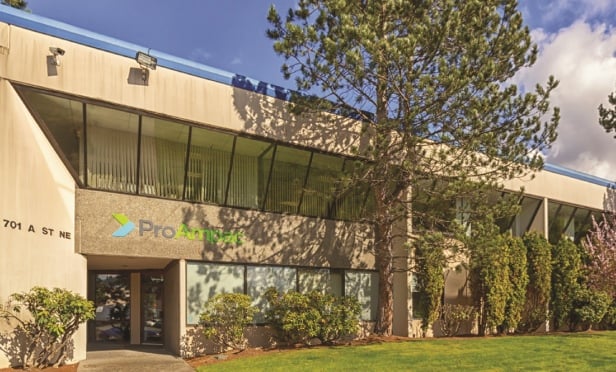Part 2 of 2
LOS ANGELES-Industrial investors are shying away from risk and focusing more on core investments as they shift their strategies, according to speakers at the sixth annual CB Richard Ellis Southern California Real Estate Conference this week. “Pension funds have really changed their strategies,” explained Darla Longo, CBRE vice chairman and an industrial market specialist.
Longo joined other panelists to provide a quick capital markets overview, mostly surrounding the industrial sector, pointing out the shift in the capital flows that has accompanied the change in strategies by institutional investors. Part of that shift is the increasing focus on core properties, which in turn has intensified the competition for those properties and driven up prices, a point that CBRE CEO Brett White underscored in his remarks to the conference on Thursday.
Speaking to the audience of nearly 400 at the event in Downtown L.A., White said that, thanks to the bidding competition for core assets, the greatest opportunities are not in core but in other assets with more upside potential.
The capital markets overview by Longo and other panelists showed that core property funds have attracted $7.2 billion in capital this year; riskier funds targeting at $120 billion only closed at $6 billion. Specifically, Longo pointed out, CalSTRS has a $132.2-billion fund that is increasing core allocations to 50% from 35% and is decreasing riskier allocations to 50% from 65%.
Longo also pointed out that third-party-managed funds, which make up majority of capital, have decreased to 49% from 77%; publicly listed companies now account for 17% from 4% in 2009; and to date, over $9 billion in industrial real estate has traded--$1.6 billion in September alone.
Concerning trends, Longo said, “What we have is global investment capital targeting US real estate, which is forecasted to double in 2011.” Regarding distress, she said that “Basically, 77% of the distressed industrial assets are still unresolved.” Of the $11 billion of industrial real estate that has fallen into distress this cycle, she said, only 3% has been restructured. However, as Longo pointed out in a recent interview with GlobeSt.com, industrial assets account for only a small portion of the commercial real estate market’s overall distress, about 10%.
Another trend outlined at the conference was the improving debt market. “We are seeing very strong increasing appetites from lenders,” said Val Actemeier, executive vice president of debt and equity finance at CBRE. “Recent debt market activity can be characterized by strong lender demand for mortgages and incredibly low interest rates,” she said.
Liquidity, Actemeier said, has continued to improve through 2010. Some common themes in the debt market that she pointed to in addition to expanded lender appetite and low interest rates included increasing risk tolerance, a decline in issuer defaults, volatile macro capital markets (weak job growth, sovereign debt, global issues) and compressed spreads.
Actemeier described the debt market as improving but still inefficient. CMBS issues are returning to fill a void and are expected to total $8 billion to $10 billion this year—perhaps $40-billion in 2011. Life companies have about $20 billion to $25 billion to invest in core, stabilized assets with excellent pricing, she said, while the banks that are lending again are focused intently on sponsorship driven. Among the challenges in the debt market, she said, are vacancy, rollover, single-tenant exposure, mark-to-market impact and approaching maturities.
The CBRE event included top producers and executives from around the country. Among some of their observations:
Chris Riley, vice chairman of the southeast, pointed out that national class A industrial cap rates have compressed from this time last year and “are still 100 to 150 basis points off from where they were at the peak.” Riley predicted further compression of cap rates next year but said, “We will find improved fundamentals in 2011.”
Mike Hines, northeast executive vice president, compared A and B class properties. “If you look at B space, it has improved over the past six months. It is not as significant as class A, but I think going forward, you are going to have to see some improvement on class B space,” Hines said. “I believe that the best opportunities in 2011 will be in the class B markets.”
Mike Caprile, vice chairman of the North Central region, pointed out that more foreign capital is targeting the industrial sector because investors feel comfortable with industrial properties. “It has a more predictable cash flow and that is what everyone wants. It is what it has always been,” Caprile said.
© Touchpoint Markets, All Rights Reserved. Request academic re-use from www.copyright.com. All other uses, submit a request to [email protected]. For more inforrmation visit Asset & Logo Licensing.







